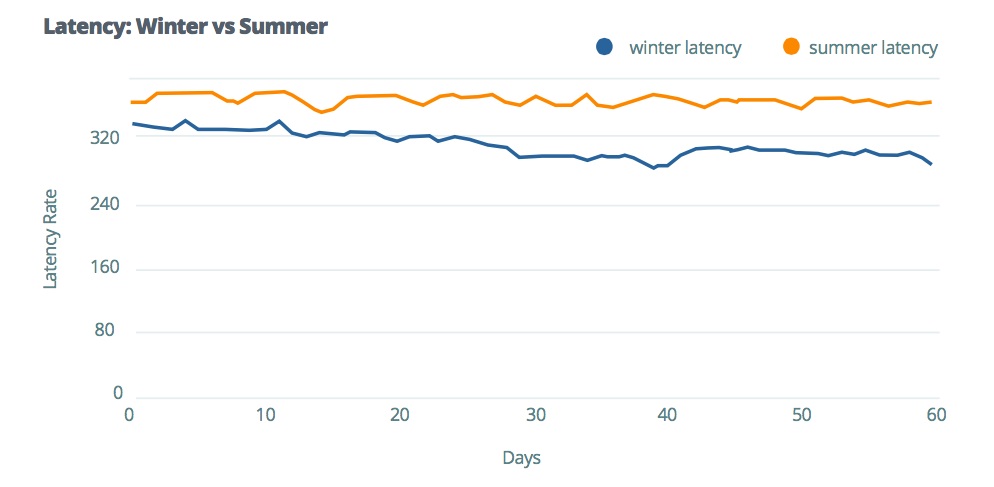Managing your app's performance is a never-ending challenge. With constantly changing network conditions and new devices frequently entering the market, maintaining a high-quality user experience takes knowledge and diligence. Adding to the list of factors to watch out for when it comes to app performance is something you might not expect — the weather.
According to a recent study, on average, mobile apps will run about 15% slower during warm summer months. Why? It all has to do with the propagation of radio waves. Extra humidity in the air during summer causes waves to lose intensity, especially at higher frequencies. This means, the water vapor and heat summer bring will cause an overall degradation in signal strength, as well as delays in data delivery.
The chart below highlights the difference in latency of apps in summer versus the winter.

Another factor that contributes to lags in data during the summer has less to do with applications, and more to do with devices becoming too hot. Because processors are heat sensitive, they slow down when they get too hot. Dealing with an overheated device can quickly become a downward spiral — devices use more battery when they're working harder in a hot environment, and batteries charge more slowly when they're overheated, in turn, heating up the phone as they charge.
To keep apps at optimal performance, it's essential to keep your device cool. Users can assist their device in warm climates by not keeping their phone in pockets, and removing cases when the phone gets too hot.
Andrew Levy is the Co-Founder and Chief Strategy Officer of Apteligent.


